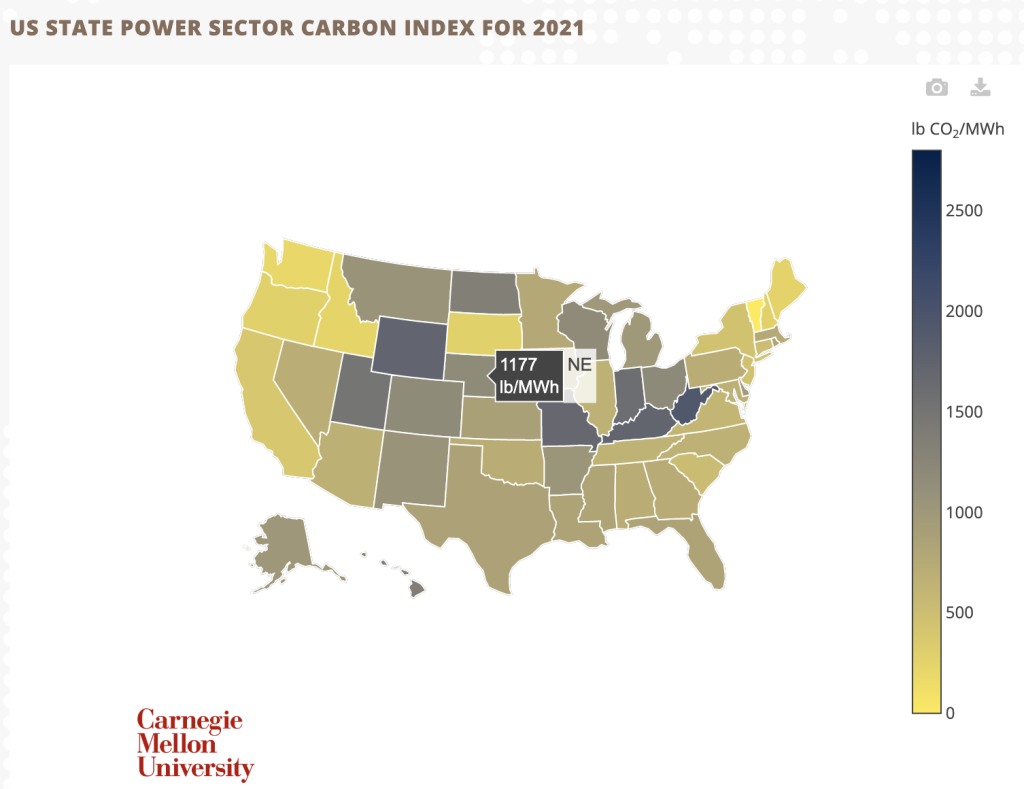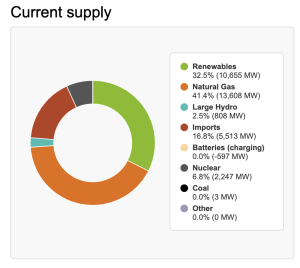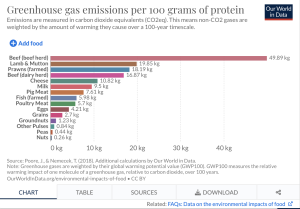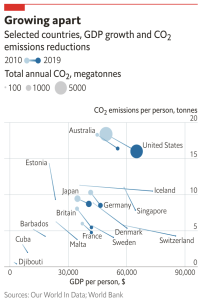So you just bought an electric vehicle (“EV”), solar panels, heat pump, or other clean technology. Are you now a climate hero? You’ve reduced your emissions, to be sure, but… not quite! In this post, I’m going to explore the imperative to think holistically about what it takes for us, collectively, to tackle the climate crisis.
Let’s use EVs as an example. A family friend, who shall remain nameless, recently purchased an EV, paying extra for the model that accelerates from 0-60 in less than three seconds. I asked if he had considered adding solar panels to his home, which, after using Google’s free Project Sunroof tool, we determined was a good fit for rooftop solar. He hadn’t, and within days a solar installer had given him a proposal for a system that would eliminate his utility bills–even after factoring in the electricity usage for the EV.
The installer recommended a solar lease, wherein the company owns the system, the homeowner pays them a monthly lease payment, and they maintain the panels and guarantee a payment that is less than or equal to the customer’s current utility rate (panels rarely require maintenance). Because it is not a loan, a lease doesn’t impact the client’s credit, and in the event the home is sold, the customer can either pay off the balance of the lease, or, more commonly, transfer the lease to the new owner. Solar leases make a lot of sense in cases where the customer doesn’t have enough tax liability to claim the Solar Investment Tax Credit (“ITC”), which the Inflation Reduction Act (“IRA”) increased to 30%; she doesn’t qualify for a loan, or doesn’t want to take on debt; and / or when the homeowner doesn’t plan to stay in the home long enough for the panels to pay for themselves.
The only downside of a lease is that it can add a slight complication to the process of selling the home, since the prospective buyer has to understand that she is inheriting a lease that will still save her money over the status quo. I emphasize slight: especially in California, where rooftop solar is so prevalent, buyers and realtors are increasingly accustomed to, and comfortable with, solar leases. Nevertheless, our friend, who is quite economically secure, decided not to proceed because, in the future, it might be slightly harder to sell his expensive home. In the midst of a climate crisis, in other words, some are unwilling to make an investment that costs them nothing and carries minimal risk.
Now, the climate doesn’t care what inspires the purchase of an EV; but if the buyer mostly wanted to go vroom vroom and feel good about himself, it augurs poorly for taking the other actions that are required to dramatically slash emissions. Buying an EV doesn’t automatically make one a hero. First, there’s the fact that most people still can’t afford one, and there is a lack of availability of models; that some don’t buy an EV is, for now, a function of economics and supply chains. And consider that, because of the battery, EVs are more energy-intensive to manufacture than internal combustion-engine (“ICE”) vehicles: it can take two years of driving before the EVs so-called life-cycle emissions become lower than for an ICE vehicle. (By the end of an EV’s life, however, it is significantly better). Crucially, this calculation depends on several factors, including:
- How big the battery is. A Tesla Model 3, with a 70 kilowatt battery, is significantly less carbon-intensive to build than a Hummer EV with a 212 kilowatt battery.
- How the car is driven. Driving like a grandma uses significantly less energy than driving like a formula-one racer.
- How efficient the vehicle is. While all EVs get better miles per gallon equivalent (“MPGe”) than an ICE car, and have a lower cost-of-ownership thanks to their simplicity, the size and power of the EV matter. The Model 3’s MPGe is 132 (that is, it’s equivalent to getting 132 miles per gallon in an ICE car); for the Hummer EV, that figure is just 47–better than the 15 MPG for the ICE version, but worse than a Prius.
- How, where, and when the EV is charged. This is fascinating, and gets to the broader point about holistic thinking. The carbon-intensity of the electric grid–usually measured in pounds of carbon dioxide emitted per megawatt-hour (“MWh”) of energy produced–varies from place-to-place and time-to-time. In California, where I live, the figure is 391 pounds per MWh; in Texas, that figure is 847 (data from EmissionsIndex.org). So just by owning an EV in California, the emissions caused by charging the car are more than half those of an EV in Texas. Of course, the figures are different if the EV owner has solar panels or is signed up for community solar: in those cases, they may offset as much as 100% of their EV emissions.

However, it’s not that simple: renewable energy is predictable but intermittent, so the sources of power vary based on the time of day, how sunny or windy it is, and how much power is being used. In California, the carbon intensity of electricity can be close to zero on the sunniest days at peak sunshine; whereas at night or on hot-but-cloudy days, electricity generation may be supplied mostly by fossil gas (natural gas is an industry term that environmentalists are moving away from), which is cleaner-burning than, say, coal, but still polluting. So if you have an EV, timing your charging to match, as best as possible, when the grid is cleanest can make a huge difference.

Supply breakdown at noon on Sep 10, 2022. Source: CAISO.com
As I write this, around noon on Saturday, September 12, renewable energy is supplying 32.5% of electric demand, with other zero-carbon sources–hydropower and nuclear–supplying an additional 9.3%. If you don’t have rooftop panels and you charge your car right now, then, 41.8% of the electricity will be emissions-free. Were you to charge yesterday at noon–on a much sunnier day–about 67% of the power would be zero-carbon. Finally, last night that percentage dropped into the low thirties.
Let’s look at another example of the complexity and nuance of cleantech. Suppose you have a rooftop solar array that produces 100 kilowatt-hours (kWh) during the day, and you use no electricity during that time. This means that 100% of your production was fed into the grid, powering other homes and offsetting dirty power. Now let’s suppose you use 100 kWh during the night, charging your car, running the dryer, and so on. On balance, you had a carbon-neutral day, right? Yes and no. You did offset 100% of your night-time usage–the clean power you didn’t use during the day was used by others–but what matters is the real-time, moment-by-moment emissions associated with a unit of power. Had you perfectly matched your usage with your production, then yes, you would’ve been truly carbon neutral; instead, you reduced overall grid emissions during the day, but still caused emissions at night.
At our house, which has a 16.8 kilowatt solar array, two EVs, and a 26 kilowatt battery backup system, we try to run appliances and charge our cars when the sun is shining, and conserve when it isn’t. Doing so isn’t a matter of economics but of emissions; in California, power is most expensive from 4 – 9 PM, so, in terms of cost, the key is reducing usage during that window of time (to give an idea, the cost / kWh is about $.32 during off-peak hours and over $.50 from 4 – 9, at least on my plan). But of course, this kind of constant monitoring is neither sustainable nor scalable. Knowing this, utilities and technology providers are building smart meters, smart EV chargers, and responsive heat pumps and other appliances so as to automate this balancing of supply and demand. For example, if you have a heat pump water heater–which runs on electricity–it is best to heat the water when the grid is clean, storing that clean energy in the form of hot water for when it’s needed and power is dirtier, or less available. Similarly, a smart fridge can over-cool at certain times for the same reason. Moreover, soon EVs will start providing grid backup, so that a driver will be able to sell back to the grid some of the energy in their car battery at times when electricity is expensive and they don’t need the juice. This can make a huge difference, since the combined fleet of EVs compromises many megawatts of power. Another interesting example: as part of Apple’s iOS 16 release, they will have a feature to allow people to optimize their charging for when the grid is cleanest!
Being a climate hero, then, is about much more than purchasing one technology or another. It’s also about how those technologies are used; what kind of purchase you make; investing in companies that are working to solve these challenges; encouraging and having a low-carbon diet, especially by reducing consumption of beef; depositing money in banks and credit unions that lend to clean-energy companies; supporting policy that automates these complex decisions and makes them more financially viable; and so on.

Source: Our World In Data https://ourworldindata.org/grapher/ghg-per-protein-poore
EV manufacturers, for example, aren’t just thinking about reducing the embedded emissions of the batteries, but, increasingly, they’re trying to source carbon-free or low-carbon steel through the SteelZero initiative (steel manufacturing accounts for about 8% of global emissions). Battery producers are thinking about ways to ensure that, at the end of the EV’s useful life, the batteries are either recycled or put to work backing up the electric grid. Solar and wind manufacturers are also cleaning up the energy and carbon-intensity of manufacturing, as well as ensuring recycling of key materials at end-of-life.
The good news is that e technology is here, and a lot of folks are working on these issues. Between heat pumps, massive wind turbines, cheaper and cheaper batteries, residential and utility-scale solar farms, green hydrogen, advanced geothermal, and other promising approaches (such advanced nuclear), we have plenty of low-cost, zero-emissions ways of producing the energy the global economy requires. In fact, some countries have finally been able to “decouple” economic growth from emissions; this has been the holy grail, since it means an economy can develop, jobs can be created, etc., without a concomitant increase in emissions. Nevertheless, global emissions are still rising, especially as lower-income countries develop: we have to do more, more quickly.
All of which is to say that, yes, we should be buying EVs and solar panels and the like. But to be a climate hero is to understand, and do something about, the complexity and nuance of the climate crisis–making informed individual decisions, but also looking beyond that and at mass transit; sustainable agriculture; federal, state, and local public policy; the financial system; climate resilience and adaptation; reducing consumption and flying less; and reparations for countries like Pakistan and Bangladesh, which did very little to cause the crisis but which are suffering astonishing, climate-driven disasters right now. It’s exciting, especially with the passage of the IRA, to live in a time when there is momentum on the side of action; it couldn’t come any sooner, what with the worst impacts of climate change having arrived earlier than expected. It’s not too late to act–not by a longshot, though we’ve locked in some climate damage already. What we need is a community of climate heroes, working together with love, joy, hope, and fervor!




Leave A Reply